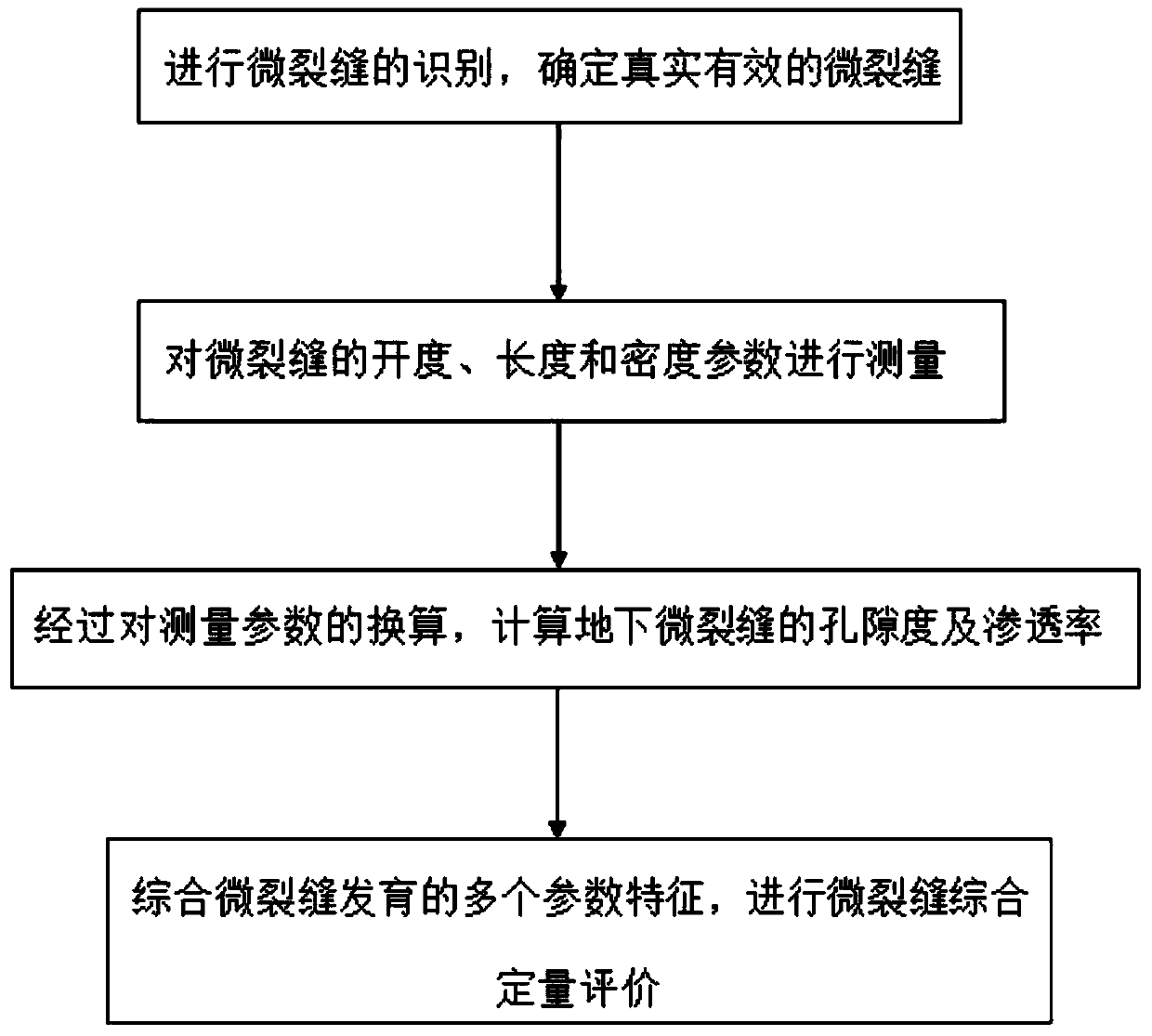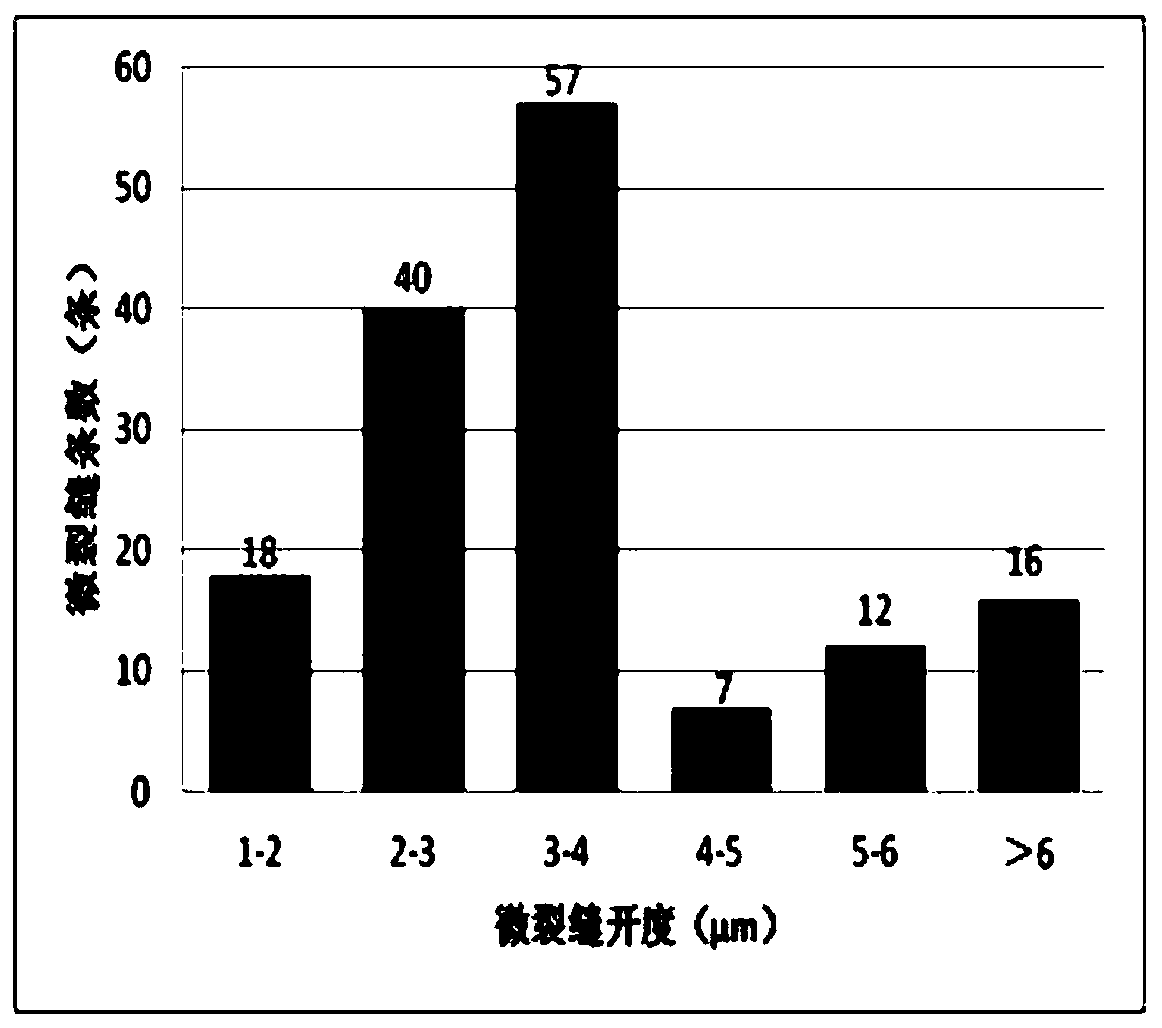Quantitative evaluation method for microfractures of tight clastic rock reservoir
A quantitative evaluation and micro-fracture technology, applied in the field of oil and gas exploration and development analysis, can solve the problems of judging the storage and permeability of tight reservoirs, and achieve the effect of improving development efficiency
- Summary
- Abstract
- Description
- Claims
- Application Information
AI Technical Summary
Problems solved by technology
Method used
Image
Examples
Embodiment
[0044]In this example, through the observation of 323 thin sections of a certain reservoir, it is found that the micro-fractures developed in the reservoir are mainly intergranular fractures, followed by intragranular fractures and grain boundary fractures. Such as Figure 5 As shown, the grain penetration seam has a large scale and a long extension, and is not limited by mineral particles. The opening is mostly 5 μm-20 μm, and most of them appear to pass through several mineral grains.
[0045] The genesis of grain-through fractures is mainly related to structural fractures, which have obvious directions and are partially filled with asphalt and calcite, followed by diagenetic fractures mainly developed on lithological interfaces, such as Figure 6 As shown, the intragranular fractures are mainly developed as quartz cracks, with small opening and length, and the opening is less than 10 μm, which is mainly formed by diagenesis and later tectonic compression. Therefore, in ord...
PUM
 Login to View More
Login to View More Abstract
Description
Claims
Application Information
 Login to View More
Login to View More - R&D
- Intellectual Property
- Life Sciences
- Materials
- Tech Scout
- Unparalleled Data Quality
- Higher Quality Content
- 60% Fewer Hallucinations
Browse by: Latest US Patents, China's latest patents, Technical Efficacy Thesaurus, Application Domain, Technology Topic, Popular Technical Reports.
© 2025 PatSnap. All rights reserved.Legal|Privacy policy|Modern Slavery Act Transparency Statement|Sitemap|About US| Contact US: help@patsnap.com



